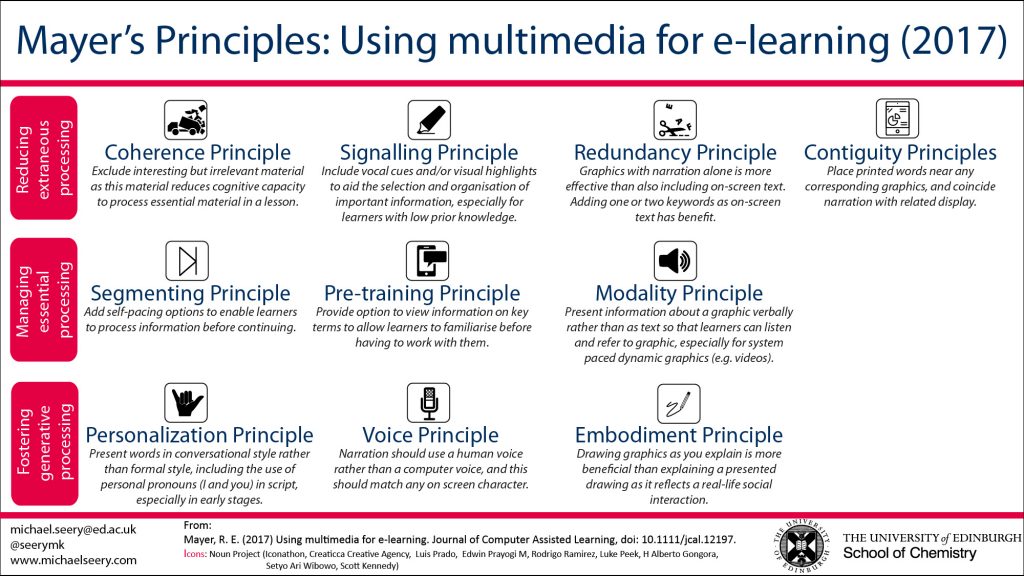Teaching modules
Learning as a social activity works best when it is truly a social activity: a discussion between students, or between students and a lecturer, in which a topic can be looked at from several perspectives. But how do you encourage students to participate actively in modules? How do you make good use of the time available during a lecture, and how do you encourage students to keep working afterwards?
Why?
The design of the module defines the learning activities needed for students to develop specific learning outcomes. A range of learning activities are required for the acquisition of knowledge and professional skills coupled with personal growth. It is up to you as a lecturer to carry out these activities in such a way as to maximise what students learn from them.
Learning is a social activity. This means students can learn a lot through self-study, but up to a point; in-depth understanding and effective problem-solving are achieved through discussions with others. This requires taking the time to exchange insights, opinions, experiences and doubts with students. Tutorials and seminars lend themselves to this, of course, but in lectures, too, you can invite students to interact with each other and with you.
What?
Different types of learning activity require different approaches, as the objectives often vary. If your module incorporates contrasting types of learning activities, students enage with the material from various angles. This ensures a deeper understanding of the content.
We can categorise learning activities based on objectives and types of interaction:
Acquiring knowledge independently [self-study]
Independently acquiring knowledge is an important skill in higher professional education. Knowledge can be acquired in many ways: reading literature, doing assignments, independently working on problems from professional practice, doing one’s own field research (such as interviews), literature studies or desk research.
Knowledge transfer [lecture]
Lectures can be an effective type of education, especially for large groups of students. You can come up with various strategies to impart the content (see Self-study). Instead of just sending, you can use lectures to focus more on assisting with understanding, discussing misconceptions and applying newly acquired knowledge in practice.
As a useful addition to this, you can organise a guest lecture on applied knowledge and experience by an external expert.
Practising skills and applying knowledge [seminar]
Seminars enable students to apply knowledge together or individually when working on assignments. The lecturer or other support staff are available to help with questions. Applying knowledge in practice (practical training and professional assignments) is, of course, an important way of acquiring professional skills.
Reflection and feedback
Reflection and peer or other feedback are powerful resources in the learning process, which you can harness in every learning activity.
How?
Online and on-campus activities included in the design are implemented in specific ways by you, the lecturer. How can you make optimal use of on-campus time to activate students and integrate knowledge? How do you ensure that online learning activities lead to actual learning? The wave of blended learning only starts rolling if you implement it the right way. The lecturer’s role is different for each activity and calls for different preparation and implementation each time:
Self-study – Acquiring knowledge independently (student <-> content)
As a lecturer, you have an important role in supporting the development of self-study skills. Some things to pay attention to when doing so:
Clear instructions
Always indicate clearly what students should prepare and why. In self-study, it is crucial for students to have a structure, so their mental energy is directed towards the material and not towards confusion about what they are supposed to do.
Relevance
Give students material to study online (watching videos, reading articles, solving a problem, doing an online quiz, etc.) that is relevant for the next time they get together.
Variety
Students learn better when offered a variety of materials and activities. Examples include knowledge clips, literature, doing assignments or independently working on problems from professional practice.
More than a knowledge transfer
Independently acquiring knowledge also applies to skills and personal growth. Students learn a lot from people in the professional field, from interviews with professionals and from working visits. The further advanced into the course they are, the more they are expected to acquire knowledge independently. This includes, for example, doing their own field research (such as interviews), literature studies or desk research (such as searching for relevant academic articles). Students need clear instructions to be able to carry out these tasks.
Lectures – Transferring and processing knowledge [lecturer -> student]
The online or on-campus lecture should build on the material that students have studied independently. Students should understand that they need to prepare to be able to attend the lecture. Here are some points to pay attention to with lectures that aim to transfer knowledge:
Ensure that preparation is useful
Give a short recap of the material to activate students’ knowledge; avoid going into too much detail. Explaining the theory again in the lecture can have a negative effect on self-study, as it makes the preparation seem like it was redundant.
Give students a voice
Ensure there are enough interactive teaching methodologies, to make it clear there is an advantage to attending the lecture as compared to watching a recording of it. How do you react to questions: is yours an open and inviting attitude, or do students get the impression that questions irritate you?
Be audible
Make sure the audio is in order and your students can – literally – hear you. This goes not just for the sound quality, but also for pacing and articulation. Your students have probably never heard what you are saying before, so give them time to absorb it!
Silence and reflection
Your words have to travel through the air, be converted into electric signals in the brains of students so they can ‘hear’ you and also have to be logical so they can understand you. Pause in between sentences, especially when switching topics. Allow students to reflect on what they have heard and to summarise this for themselves.
When posing a question, give students enough time to think rather than immediately asking a student to answer the question. Give students who are not as fast the time they need to formulate an answer. This is all the more important in the case of online lectures.
Avoid death by PowerPoint
Preparing a good PowerPoint presentation is not as easy as it seems, as your own experience will probably tell you. For example, research shows that people’s capacity for processing information is limited, so do not make your slides too crowded. See this page for more tips.

Seminars – Practising skills and applying knowledge (student <-> student, lecturer <-> student)
At seminars, students can swap information and apply it to assignments and problems from professional practice, or they can practise professional skills together. The lecturer has a support role and encourages students to reflect/self-reflect, so that knowledge becomes embedded more firmly and students have a better understanding of their own abilities. Some things to pay attention to when supervising tutorials or practicals:
The right preparation
Give students clear instructions on what they should be able to do or what material they should have a grasp of. For example, they could do a quiz in Brightspace before being allowed to start on the tutorial. Also tell them which assignments to do, so they can prepare for these. If students are unclear about what to do, time and energy are lost that could be spent on learning.
Make sure the prior learning activities (self-study or lecture) cover the material students are supposed to apply in the tutorial or practical.
Increase self-reliance
The goal of getting together is to prepare the students for professional practice. Ask them first to discuss with each other and to ask questions in a discussion forum. They can then ask any remaining questions during a lecture, where your explanation will benefit everyone.
Give opportunities for deep learning
Explaining something is a great way to learn, especially when you need to answer someone else’s question and explain concepts using your own words.
Ask the students to take turns presenting a key concept or exercise to the group and to answer questions. If it concerns an exercise, students can explain how they have solved it and where they encountered difficulties.
Take the difference between design and implementation into account
The design of the module should naturally make sure that there is a logical progression of theory and assignments. Nevertheless, as a lecturer, you should always stay mindful of any possible mismatch between the design and the implementation. Students learn the most from a challenging problem they have not solved before. They do not learn much from problems that are too easy, while problems that are too hard can frustrate or discourage them.
When students are required to actively solve a new problem, use an example to show them how to proceed. This gives them a starting point and reduces the cognitive load (the worked-example effect). When students have actively solved a problem, you can:
- Collect questions and identify moments at which they got stuck.
- Do a walk through of the solution with the students
This way students will learn the problem solving strategy better and can be avoid that students solved the problem by being lucking.
Reflection and feedback student <-> student, lecturer -> student)
Reflection and feedback are essential parts of the learning process. Ideally, they should form part of all types of learning activities. The smaller the group, the easier it is to give students customised feedback. However, reflection and feedback can also be accommodated in lectures. Possible teaching methodologies for reflection and feedback during learning activities.
Making a summary
After presenting theory, ask students to summarise or make a mind map of it for themselves. Occasionally, ask a student to share the summary in the group or in small groups.
Coming up with interim examination questions or assignments
Coming up with interim examination questions or assignments and their elaborations provides an insight into students’ grasp of the concepts and whether they have assimilated all key concepts.
Quizzes with open questions
Quizzes with short, open questions at the end of a lecture can provide input for the next lecture to discuss misconceptions.
Peer feedback and self-assessment
With FeedbackFruits you can let students assess their own work and that of others and have them provide feedback.

